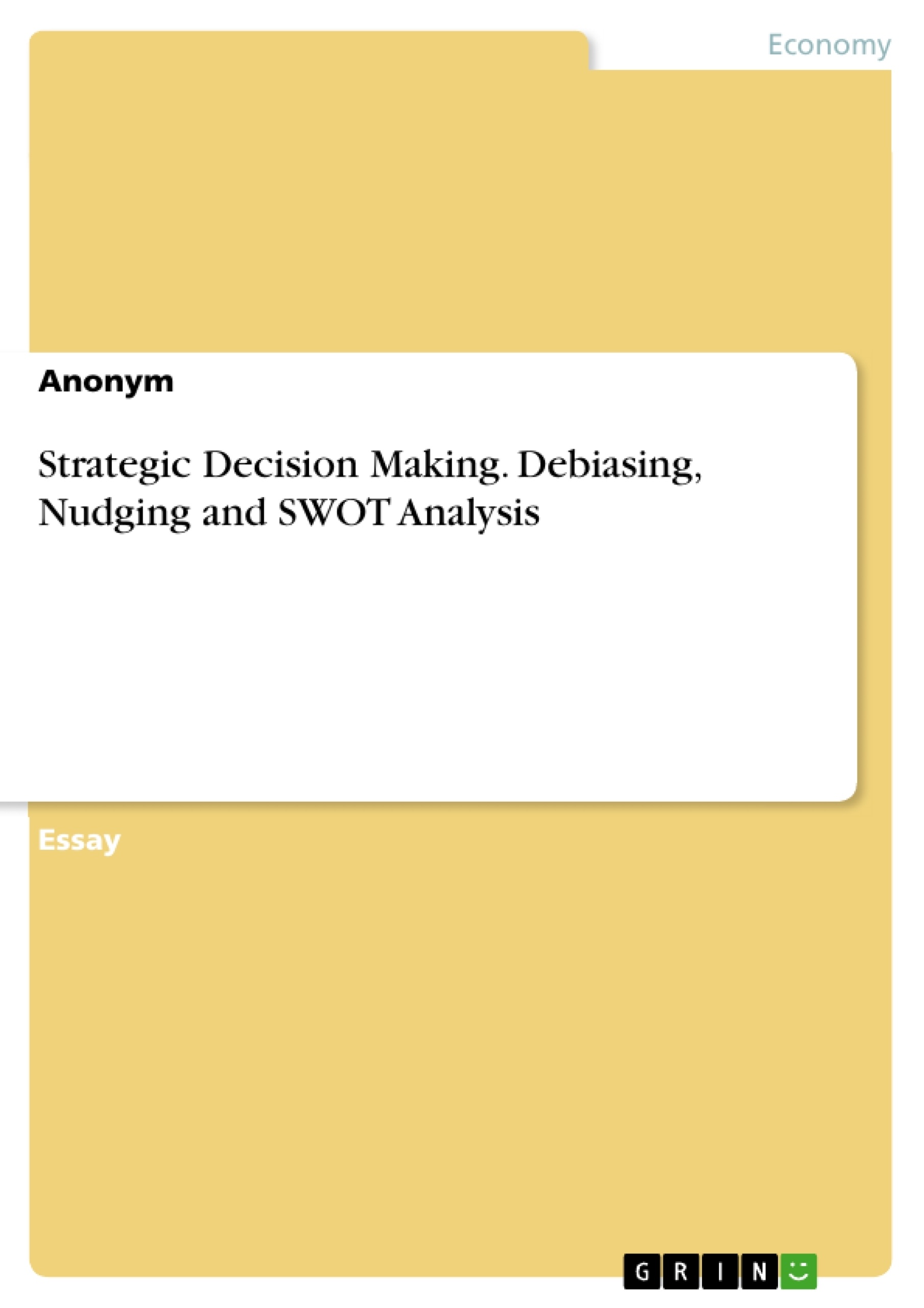Decision making is part of the management process. Before making decisions, certain variables are assigned to the various possible alternatives to assess their advantages. However, our decisions are far from being as rational as we think, and as classical economic theory suggests. This fact has far-reaching consequences - not only for strategic business areas such as the finance function and the management consulting function.
How decisions are made, how they can be improved, and the methods involved are described in this essay. The essay is divided into two main parts. The first part includes a theoretical discussion of the process of decision making and provides an introduction to the concept of different approaches of the decision-making process in light of economic theories. The second part reflects the strategic approach to decision-making. It will be explained how neuroscience can be used and how basic management tools can be exploited; these will be explained at the example of the swot analysis. In the end, there will be a summary with a conclusion of this scientific essay.
Table of Contents
- Introduction
- Decision making
- Decision making in the classic economic theory
- Behavioural economics
- Heuristic and bias
- Strategic decision making
- Using heuristic and bias for strategic decision making
- Debiasing
- Nudging
- Decision making with management tools – SWOT analysis
- Using heuristic and bias for strategic decision making
- Conclusion
Objectives and Key Themes
This essay aims to provide a comprehensive overview of decision-making, focusing on how it deviates from the classic economic theory and delves into the practical implications for strategic decision making. It explores the role of heuristics and biases in decision-making and how these elements can be utilized for strategic purposes.
- Decision-making processes in various theoretical frameworks
- The influence of heuristics and biases on decision-making
- Applying heuristics and biases for strategic advantage
- Debiasing techniques and nudging strategies
- The use of management tools like SWOT analysis in strategic decision making
Chapter Summaries
- Introduction: This chapter introduces the topic of decision-making within the context of management. It highlights the divergence between classic economic theory and actual decision-making practices, emphasizing the implications for business strategies.
- Decision making: This chapter delves into the concept of decision-making, presenting the classical economic theory's view of rational decision-making. It also introduces the concept of the homo oeconomicus and analyzes the limitations of this model.
- Strategic decision making: This chapter explores the application of heuristics and biases for strategic decision-making, including techniques like debiasing and nudging. It also introduces the use of management tools, specifically focusing on SWOT analysis.
Keywords
Key terms and concepts explored in this essay include decision-making, rational choice theory, behavioural economics, heuristics, biases, debiasing, nudging, SWOT analysis, strategic decision-making, and management tools.
- Quote paper
- Anonym (Author), 2020, Strategic Decision Making. Debiasing, Nudging and SWOT Analysis, Munich, GRIN Verlag, https://www.grin.com/document/1026089



